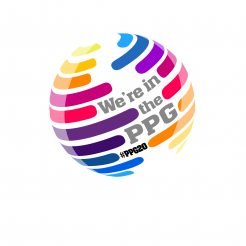The online publishing landscape and the industry’s revenue from it is under attack.
Traditionally, publishers on the internet have followed a route of advertising supported products selling traditional print content online; a model that’s increasingly less sustainable. Here's why.
Data privacy
Privacy invasions over the last twenty years by “big internet” have eroded customer trust and resulted in legislation, like the GDPR and the CCPA. This makes it harder to find out who our customers are and what they want. We have an idea of who is visiting but not a complete picture. This data is valuable. We can sell to advertisers with better reader profiles and improve our service to our audience if we understand who they are.
Customer experience
The industry has increasingly complex advertising solutions but often at the expense of the reader’s experience. Advertising ‘intrusion’ and the belief they are being watched has reinforced their sense of mistrust.
Publishing revenues
Publishing revenues are hard to come by online. The internet advertising market is costly and mature - ad networks are making more money than the publishers - producing diminishing ROI.
These factors combined creates a compelling case for moving away from a solely ad supported model for digital publishing.

Enter stage left, the paywall
We’ve been selling subscriptions and advertising for centuries. Readers are more used to paying for content than we think. The web temporarily stalled this whilst we figured out online revenue. Readers still want high quality trusted content, from brands that distill their view of the world.
Paywalls – a way of restricting access to online content based on payment – have been successful for many that have chosen the route. The FT boasts over 1 million subscribers, three quarters of which are online subscribers. The New York Times has over 3 million digital only subscriptions while maintaining good advertising revenue showing the two can easily mix.
Types of paywalls
Paywalls come in various options. They form a sliding scale from the “hard” paywall blocking all content, like The Athletic to “soft” paywalls like The Guardian’s supporter paywall which blocks nothing but suggests a subscription or donation at the end of each article. Some publishers choose to paywall content types, for instance opinion being paid and news being free. Others used a metered paywall, which places a cap on the number of free articles over a period of time.
A harder paywall presents a sales challenge as there are fewer opportunities to show the quality - which needs to be high - of the product or breadth of content it offers. So there’s a need to lean more heavily on marketing efforts to attract subscribers. The reward is a more consistent revenue stream, being less reliant on advertising.
And, while softer paywalls don’t necessarily enforce payment, they have a larger advertising footprint. For those that meter their content, the product is easier to sell itself by being more readily available without subscription.
The Economist is a fine example of selling subscriptions online. They have in the past put less content behind the paywall in times of large advertising markets and more content behind in challenging advertising markets. They mix their model of advertising and paid content to suit the global advertising market whilst retaining paid audiences.
The paywall doesn’t have to kill search rankings. Several publishers use Google’s Flexible sampling which allows Google to collect content but in return a small number of articles must be given to readers from Google search results.

If not now, then when?
Look this year to see whether you can start charging for access to your content online either with subscriptions or exchanging access for membership information. Consider a mixed model of using advertising and subscription or membership paywalls, flexing forwards and backwards with advertising sales. Can digital subscriptions and paywalls help you build and identify your audience online to give a greater picture to your advertising partners of your exact audience?
A shorter version of this article appeared in InPublishing Magazine.
